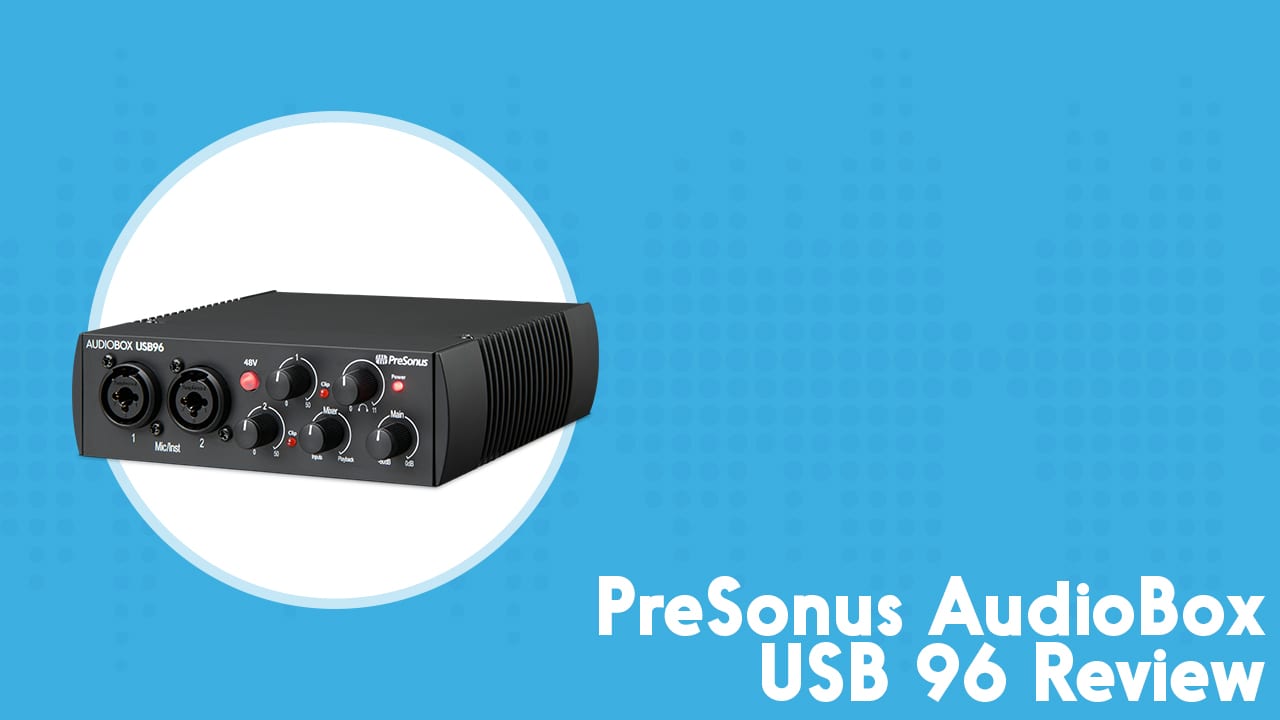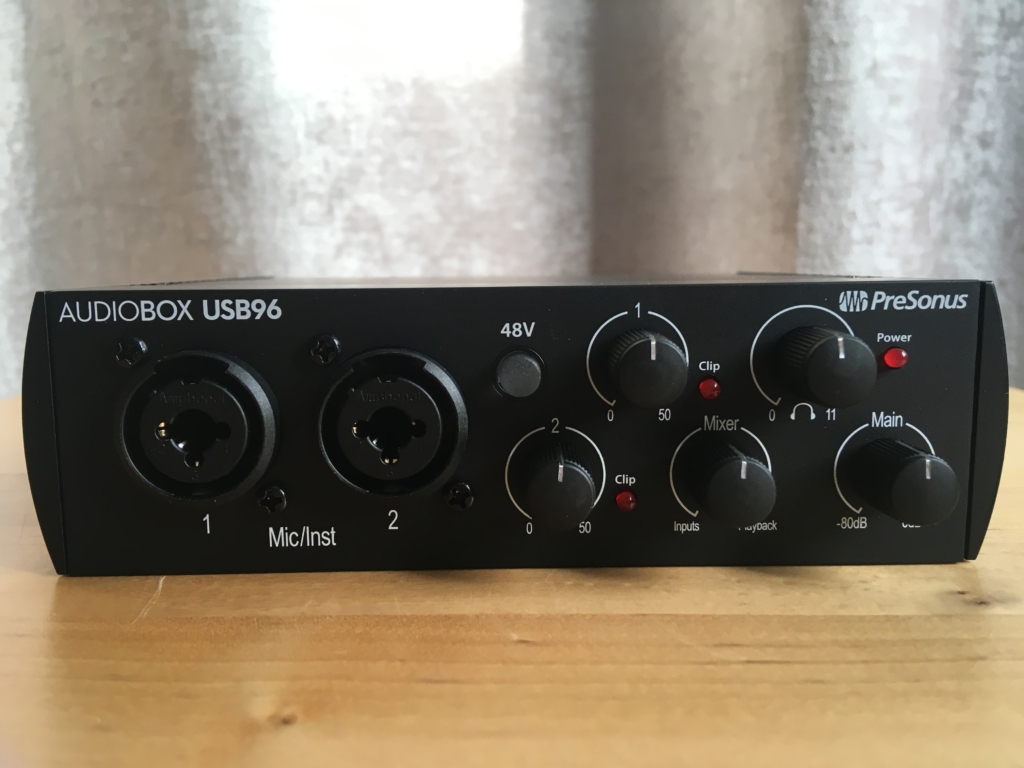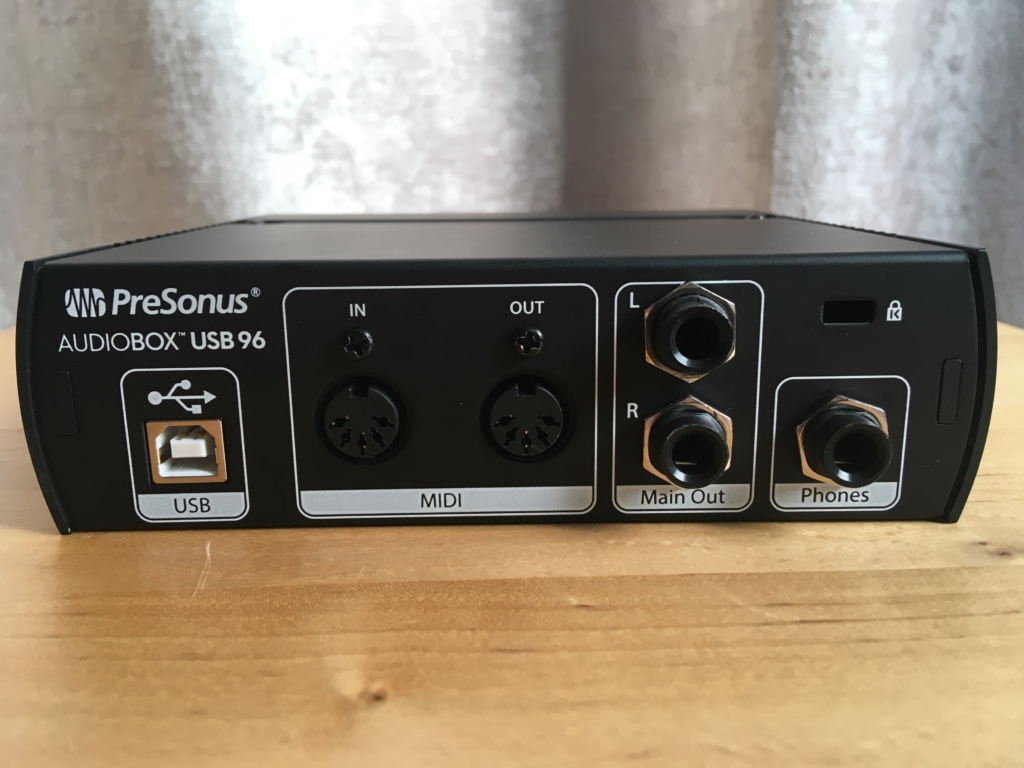PreSonus AudioBox USB 96 Review | An Invincible USB Interface

Though there are countless different ways to record a podcast these days, most people prefer to do it via their computer.
This makes a lot of sense. Computers are handy for reading scripts or notes. They can also run online call recorder tools for remote interviews. On top of that, computers give you access to the web, so you can quickly fact-check that controversial guest who keeps insisting that drinking paint will give you superpowers.
If you want to record into your computer, then you can either use a USB mic, or a USB audio interface and an XLR mic. The former is the simplest setup, but also the most limited. Using an audio interface along with an XLR (AKA an ‘analogue’) mic has the potential to boost your flexibility, your options, and your audio quality.
There are a few different USB audio interfaces on the market these days. Our focus in this particular review is the PreSonus AudioBox USB 96.

Just a quick heads up, we’ll be using some affiliate links in this article when pointing to stuff we think you’ll find useful. We may earn a commission if you buy through them, though at no extra cost to yourself.
With that said, let’s crack on with the review.
Getting Started With the PreSonus AudioBox USB 96
PreSonus are a company who’ve been serving the audio industry since 1995. Though built around (and predominantly focused on) recording music, their gear is equally at home in the world of podcasting and spoken-word audio.
Their AudioBox USB 96 interface plugs into your computer’s USB port right out the box. If it’s a Mac you’re using, you’ll be good to go. If it’s a PC/laptop, you should install the device driver, which you can grab from the PreSonus website.
You’d then want to plug your headphones into the AudioBox USB 96, and set the device as both your Input and Output on whatever you’re using to record your podcast. This might be an online call recording tool like SquadCast or Riverside, or it could be a DAW like Audacity or Adobe Audition. You actually get PreSonus’ Studio One Artist DAW and the Studio Magic software bundle along with the device, too, so you’ve plenty options on that front.
Studio One is very easy to use, yet it’s a fully-fledged production software. Sold separately, Studio One Artist (even without the Studio Magic bundle) costs the same as the interface, so there’s a lot of value to be had in this box!
Connecting a Mic (or Mics)
Of course, you’ll also need an XLR mic to plug into the device. Here are our top podcast microphone choices right now.
In fact, you can plug two mics in if need be. This would be a handy option for someone who wants to record a co-host or guest locally, as opposed to online. In these instances, you’d want a microphone each, and using two USB mics isn’t the best option for achieving this.
You’ll have the capability to record both participants on their own individual tracks. This can come in handy in the post-production phase: for example, when you need to make one person a bit louder, and the other person a little quieter, to achieve a good overall volume consistency.
The two XLR ports on the PreSonus AudioBox USB 96 don’t just take XLR connections; you can connect 1/4″ plugs too. If you’re purely interested in podcasting and spoken-word stuff, this won’t matter. But if you fancy dabbling in the recording of music and instruments, then it’s a good option to have available.
Knobs & Dials, & Features
On the front face of the PreSonus AudioBox USB 96 there are five dials and a button. So, what do they all do?
Phantom Power
Firstly, there’s the (48V) button. This is to toggle Phantom Power. Or, more simply, to switch your condenser mic on or off, if you’re using one. The chances are, your XLR mic will either be a dynamic or a condenser. If it’s the former, you won’t need to switch Phantom Power on to make it work.
Gain
There are two dials to independently control the gain of the mics you have plugged in. Gain is essentially your input volume recording level. You can easily find out if you’ve gone too loud because there are two LED ‘clip’ lights that won’t be shy in telling you.
Headphones & Headphone Volume
Another of the dials controls your headphone volume. This doesn’t affect the recording in any way whatsoever. Your headphones actually plug in round the back of the device, but as long as the volume dial itself is on the front, I don’t see this as an issue. If you want to give a local guest or interviewee headphone access too (you should!) then you’ll need to plug in a headphone splitter. These can cost as little as $3. Depending on your headphones, you might need a 3.5mm – 1/4″ adapter, too.
Mixer
This controls the monitoring of your inputs and playback from the computer. Set this to 12 o’clock to hear both, equally.
Main
The Main Level dial controls the gain of your overall recording, so you could turn all of your inputs up or down simultaneously.

Other Stuff
On the back, you’ll find L and R 1/4″ jacks to connect up your studio monitors. Most podcasters don’t use (or own) these, and prefer to edit using their headphones. Studio monitors are more popular in the music and sound design world, though a lot of fiction podcasters also swear by them too.
You’ll also find MIDI connections on the back. If you’re not interested in the music production side of things, you can ignore these completely.
Build of the PreSonus AudioBox USB 96
I often refer to the Shure SM58 as “the apocalypse survival mic”, and it looks like the PreSonus AudioBox USB 96 is its spirit animal. It’s a robust little unit, and PreSonus demonstrate just how durable it is by driving over it with a truck.
Whilst your own podcasting ventures are unlikely to lead you to the point where you need to drive over your gear in a motorised vehicle, it’s good to know you have an insurance policy against moments of carelessness. The heavy-duty steel chassis housing the AudioBox USB 96 will take a bit of a beating.
Dimension-wise, imagine a couple of thick sandwiches stacked on top of one another and you won’t be far off. It weighs 912g, which is almost exactly the weight of a pint of beer. Yes, I’m writing this review on a Friday…
Cost of the PreSonus AudioBox USB 96
At the time of writing you’re able to pick one up, brand new on Amazon, for $99 or £72.
Sound Quality
Here are some sound samples recorded with Rode Procaster, Shure SM58, and Samson Q2U mics. No post-processing has been applied, so you’ll be able to hear the audio exactly as it was recorded.
PreSonus AudioBox USB 96 Review: Summary
To sum things up, then: The PreSonus AudioBox USB 96 is a cracking little interface. But do you need one?
Well, if you feel like you already have a good workflow, always record alone or online, and are happy with the sound quality of your USB mic, then probably not.
Our Rating: 4.2/5
But, if you want to incorporate one or two XLR mics into your setup, then getting an audio interface could be the ideal solution. At less than $100, the AudioBox USB 96 (along with its included Studio One Artist software) is cheaper than the Focusrite Scarlett 2i2, and, that might just be enough to make up your mind for you. Especially if you’re partial to driving a truck over your audio equipment.
Need More Help?
Choosing and setting up gear is just one of the aspects of podcasting we cover inside Podcraft Academy, via our dedicated courses and live Q&A sessions. We also talk about everything else from interview skills and editing, to promotion and monetisation. It’s the perfect place to get all of your podcasting tutorials, feedback, tips, and advice.
